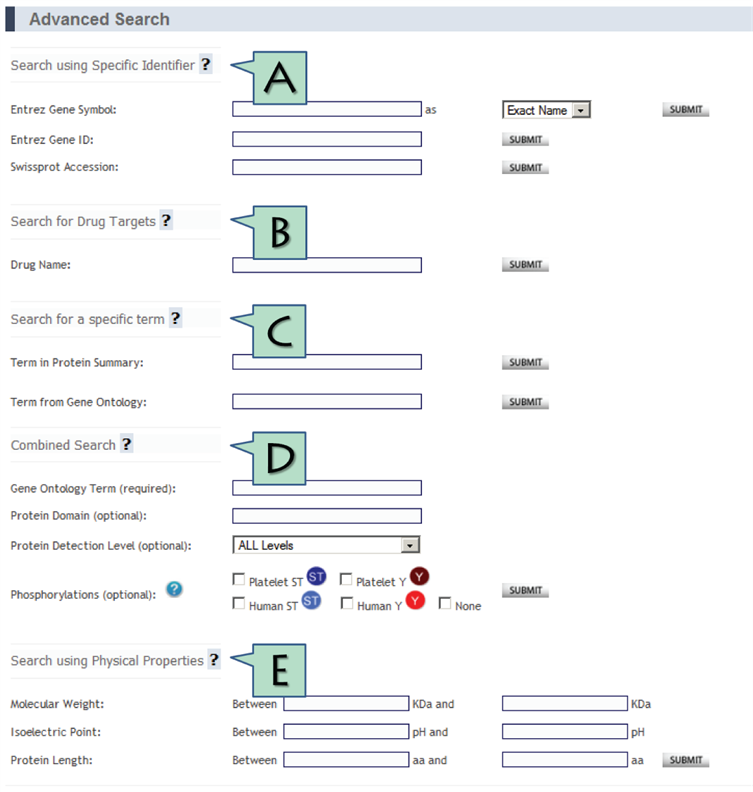!Important: The pictures given below are provided only as an example and it does not necessarily replicate the actual information in the resource.
Tutorial
- Where do I begin?
- Where does the data come from?
- Description of the proteins
- Phosphorylation and kinase information
- How to optimally use advanced search options?
- How to extract subnetworks for proteins of interest and download files to visualize in Cytoscape?
- Images not printing when trying to print. What do I do?
- Still having questions! What do I do?
5. How to optimally use advanced search options?
The advanced options search gives the opportunity to combine different types of search regarding a specific protein or a group of platelet proteins characterized by a specific feature, such as Gene Ontology terms, physical characteristics or drugs that target a set of proteins.
 |
A. Search Using Specific Identifier |
|
| Search for a specific protein by its exact name (VASP, which retrieves VASP) or similar name (VASP, which retrieves VASP and EVL), or using the swissprot accession number or the NCBI gene id. | |
| Back to Top | |
B. Search for Drug Targets |
|
| This search block is intended for searching a specific drug of interest and retrieving a list of "protein targets" associated with it. A list of suggestions is dynamically shown when entering the name of the drug. Clicking on the link "Drug ID: xxxxx " retrieves the DrugBank webpage with detailed information about the drug. The navigation to a target's description is simply achieved by clicking on the protein in the list of targets. |
|
| Back to Top | |
C. Search for a specific term |
|
| In this block, proteins can be searched according to specific words, found in their summary. A search for GO-ontology terms is also available and it provides a list of similar terms to the one entered in the search field. It is recommended to use a more specific term to get the best results and the results are limited to a maximum of 50. | |
| Back to Top | |
D. Combined Search |
|
| It is possible to narrow down the search by using this combined search where a Gene Ontology term is required and this can be optionally complemented with the protein domains, level of detection and phosphorylation state. In order to make the search more easier, the suggestions are provided for both GO Terms and the protein domains. In the protein detection level, a drop down box is provided which lists multiple options for selection.
|
|
| Back to Top | |
E. Search using Physical Properties |
|
| Search using physical properties is a useful tool when looking for a set of platelet proteins having a similar length, molecular weight or isoelectric point range. In order to further minimize the results, a combined search is helpful. | |
| Back to Top | |